MIUI 14 For Pad
MIUI has got upgraded for years to Xiaomi phones, but when it comes to a tablet, the limited user base led to a different story. Unfortunately, MIUI 14 For Pad running on this Xiaomi Pad 6 Pro still requires optimization.

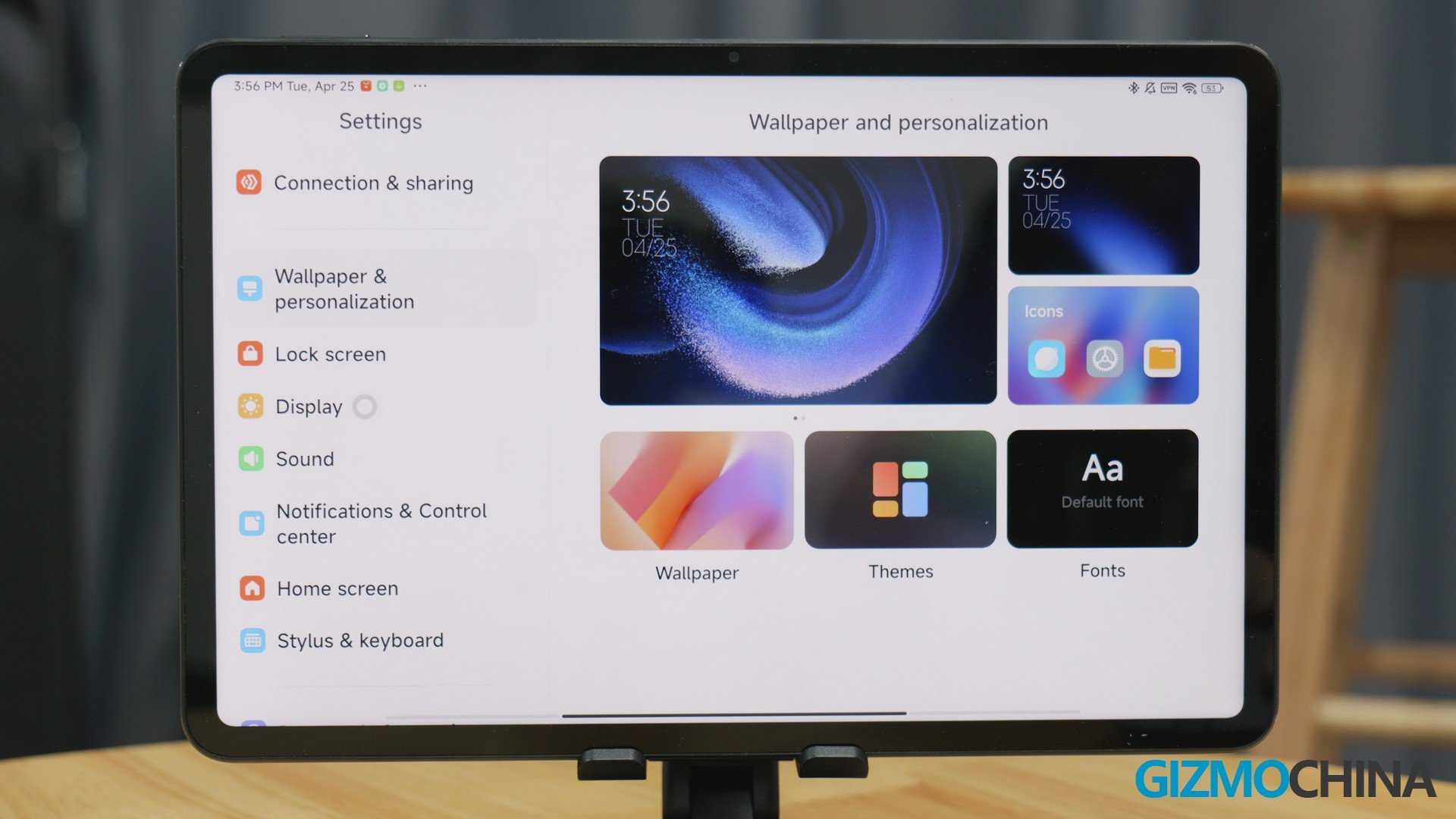
But, first of all, I have to say, its performance has been significantly improved, when you launch apps and switch between multiple apps, it’s much more responsive than its predecessor. But compared to MIUI on phones, its animation is still relatively laggy.
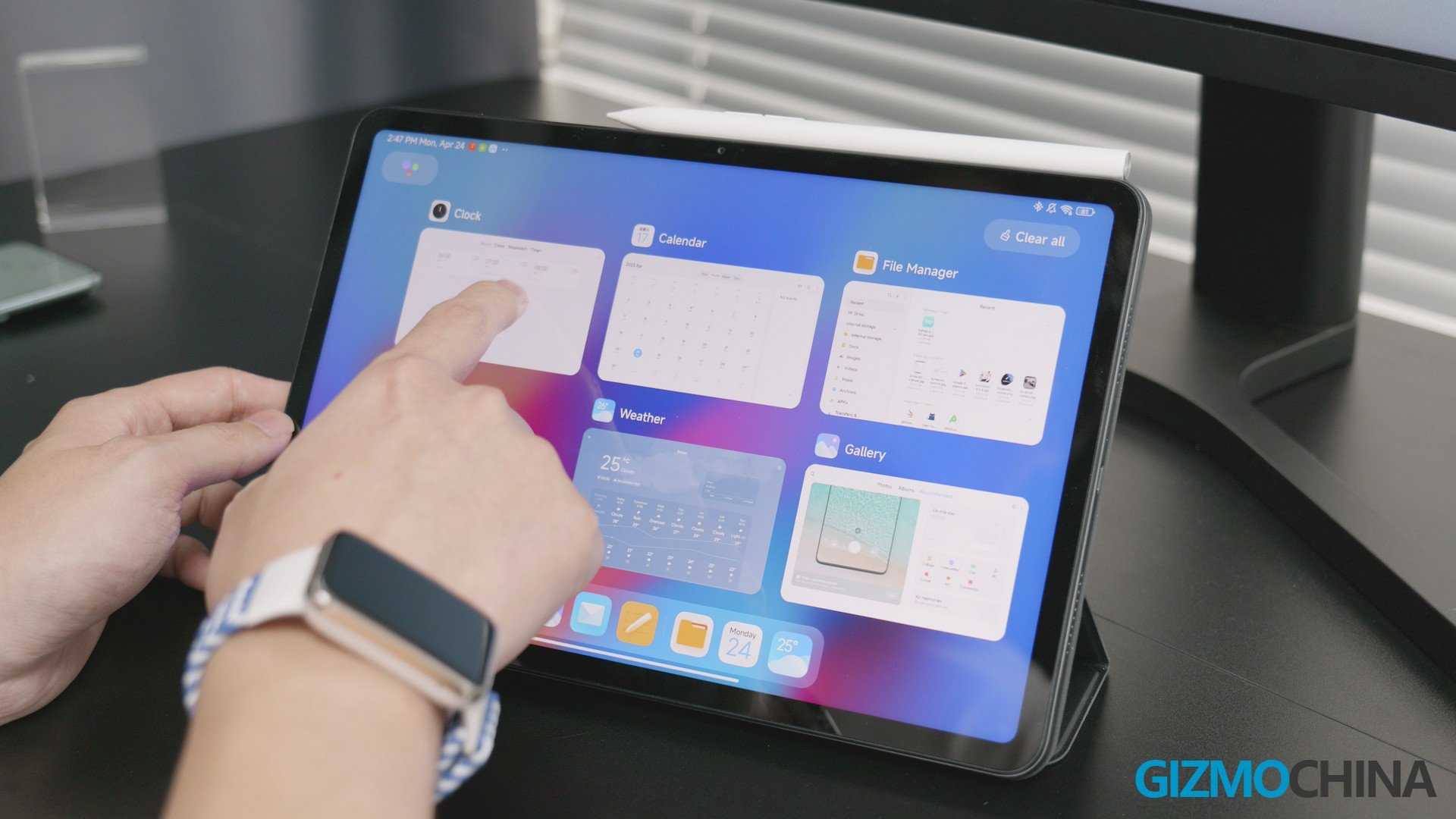
In terms of multitasking, you can now create a set of multitasking windows by swiping three fingers inward from the edge of the screen, which is more efficient than dragging out an app from the Dock. So, I pretty appreciated these enhancements.
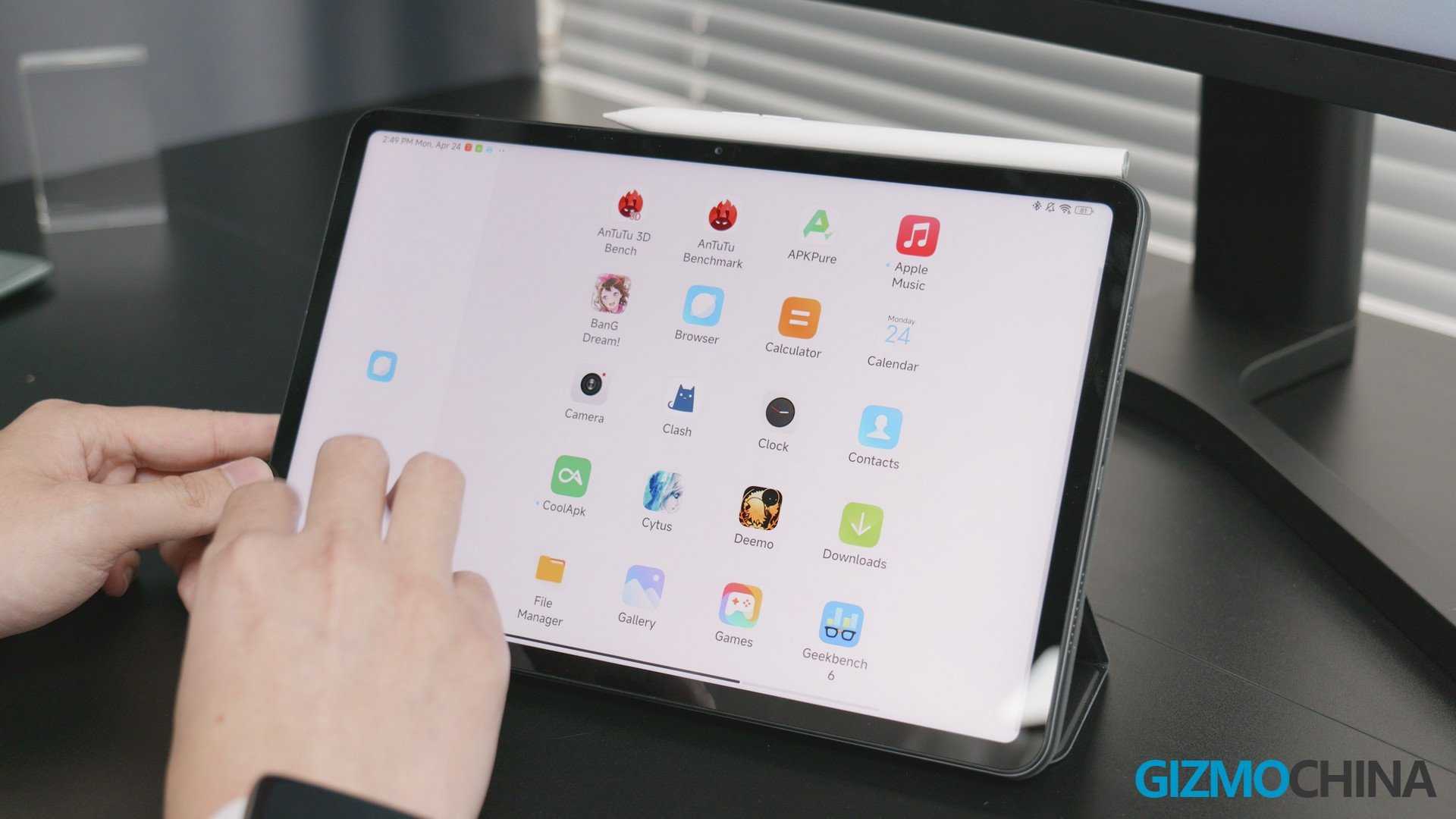
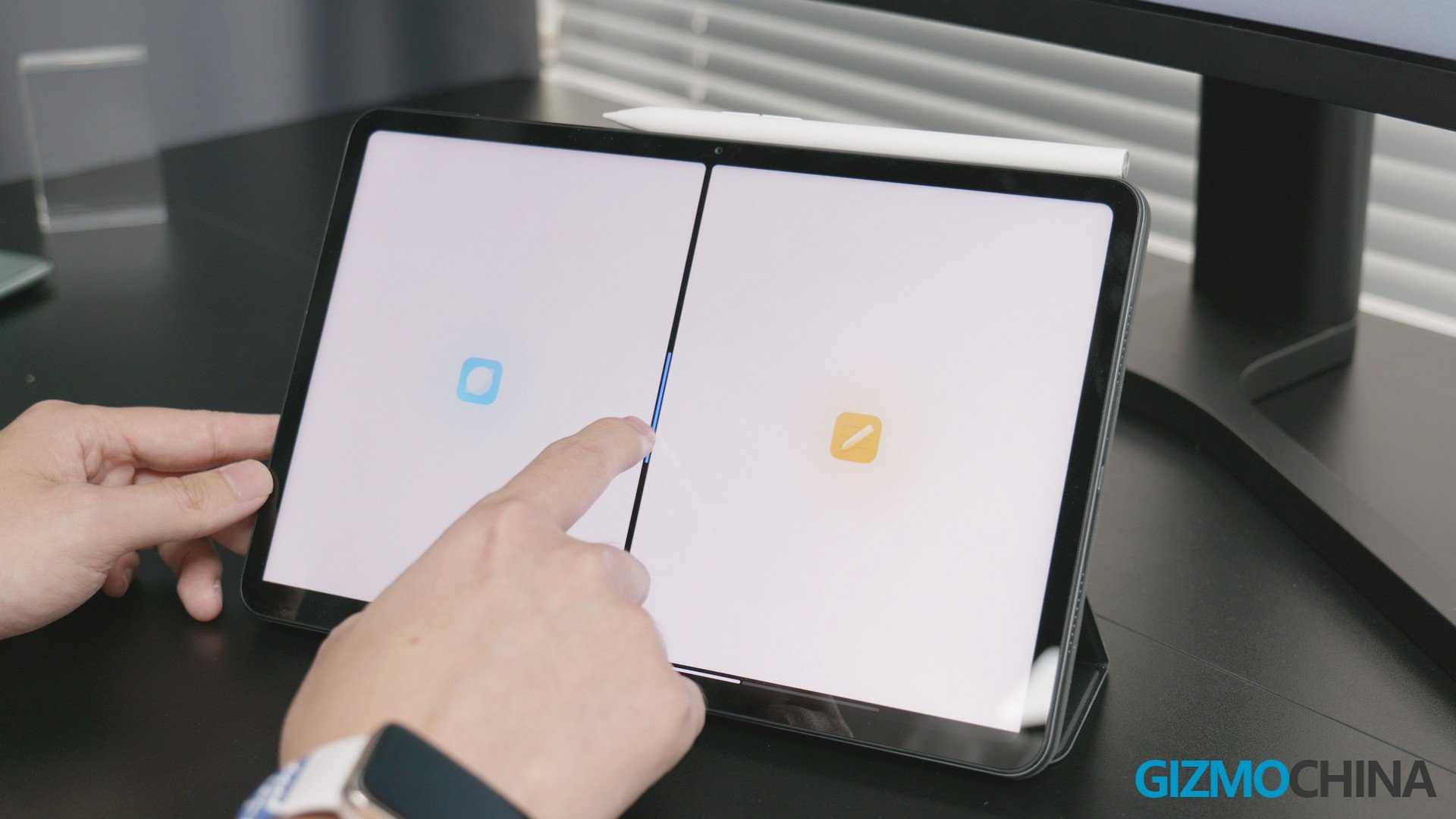
But in terms of convenience, Xiaomi’s engineers really haven’t learned how to make better use of a big screen, and I find it hard to believe that in 2023, they still haven’t integrated the notification center and the control center together. When you swipe down from the top of the screen, you’ll be shocked to see that 2/3 of the screen is wasted. So why is that, Xiaomi?
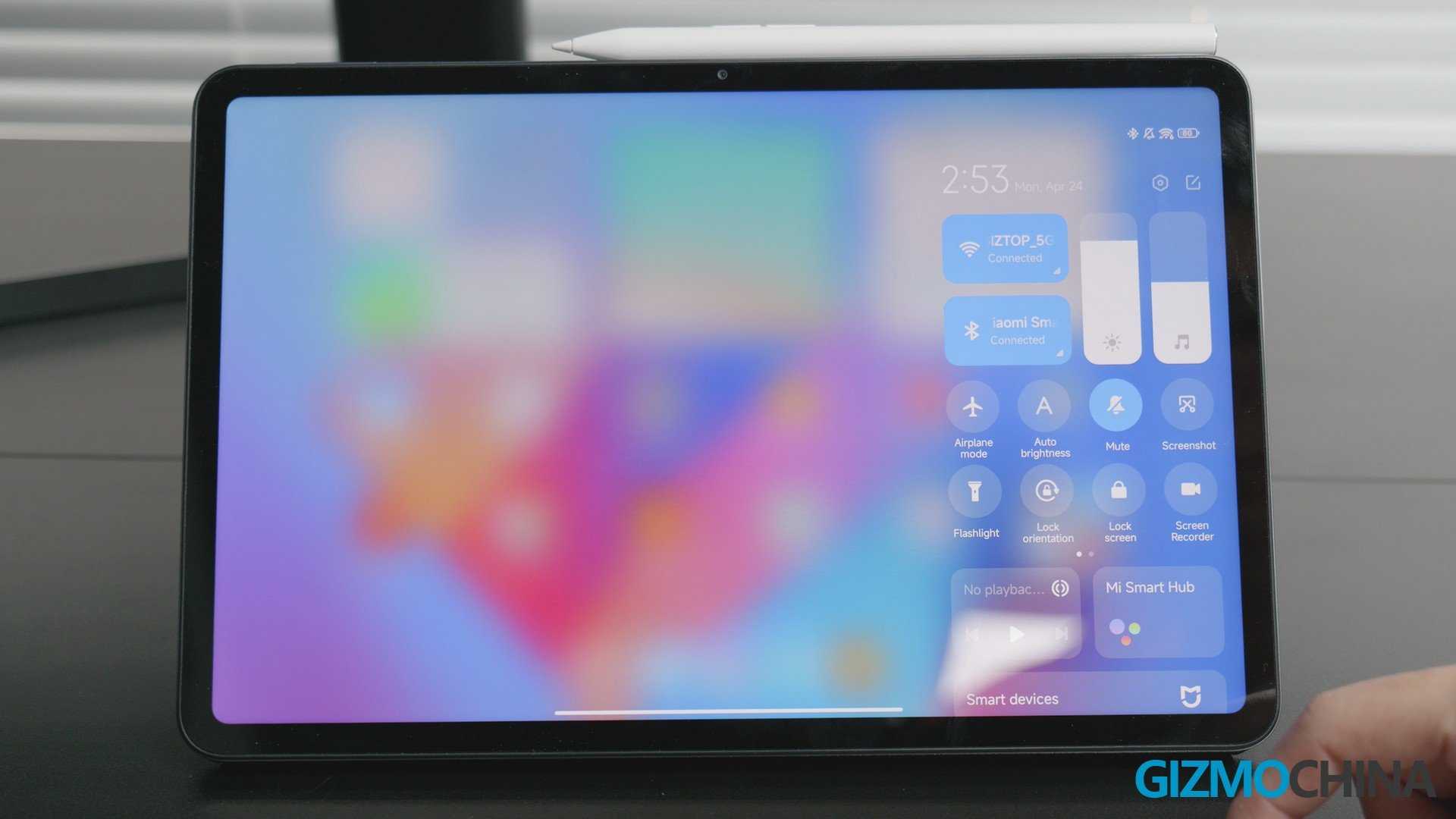

The big folder on the homescreen is also a joke, they could have put a 3X3 folder on a big screen, but they just don’t do it. All you have is this stupid 2X2 folder and what’s even crazier is that you can directly open only three of them.
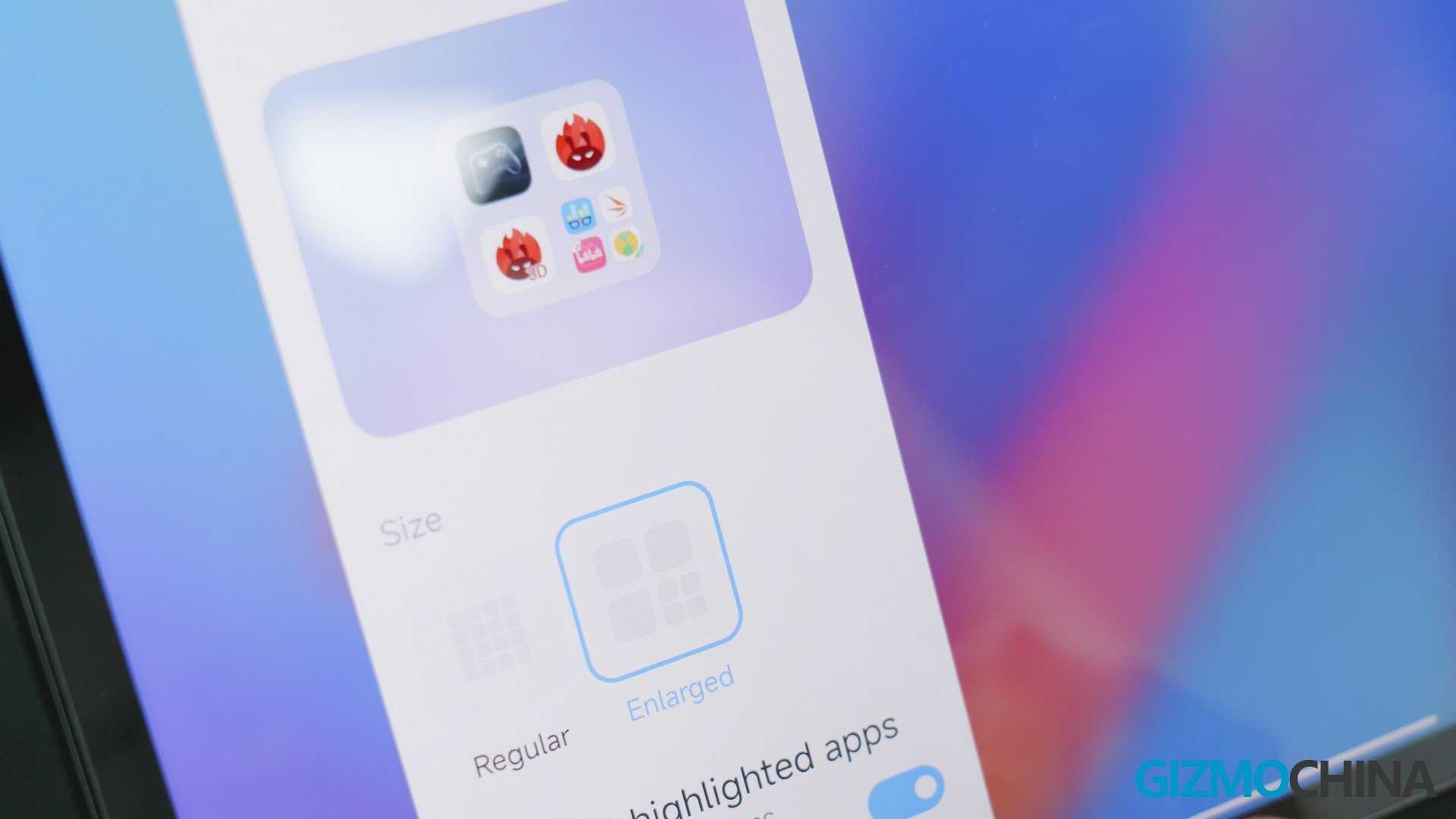
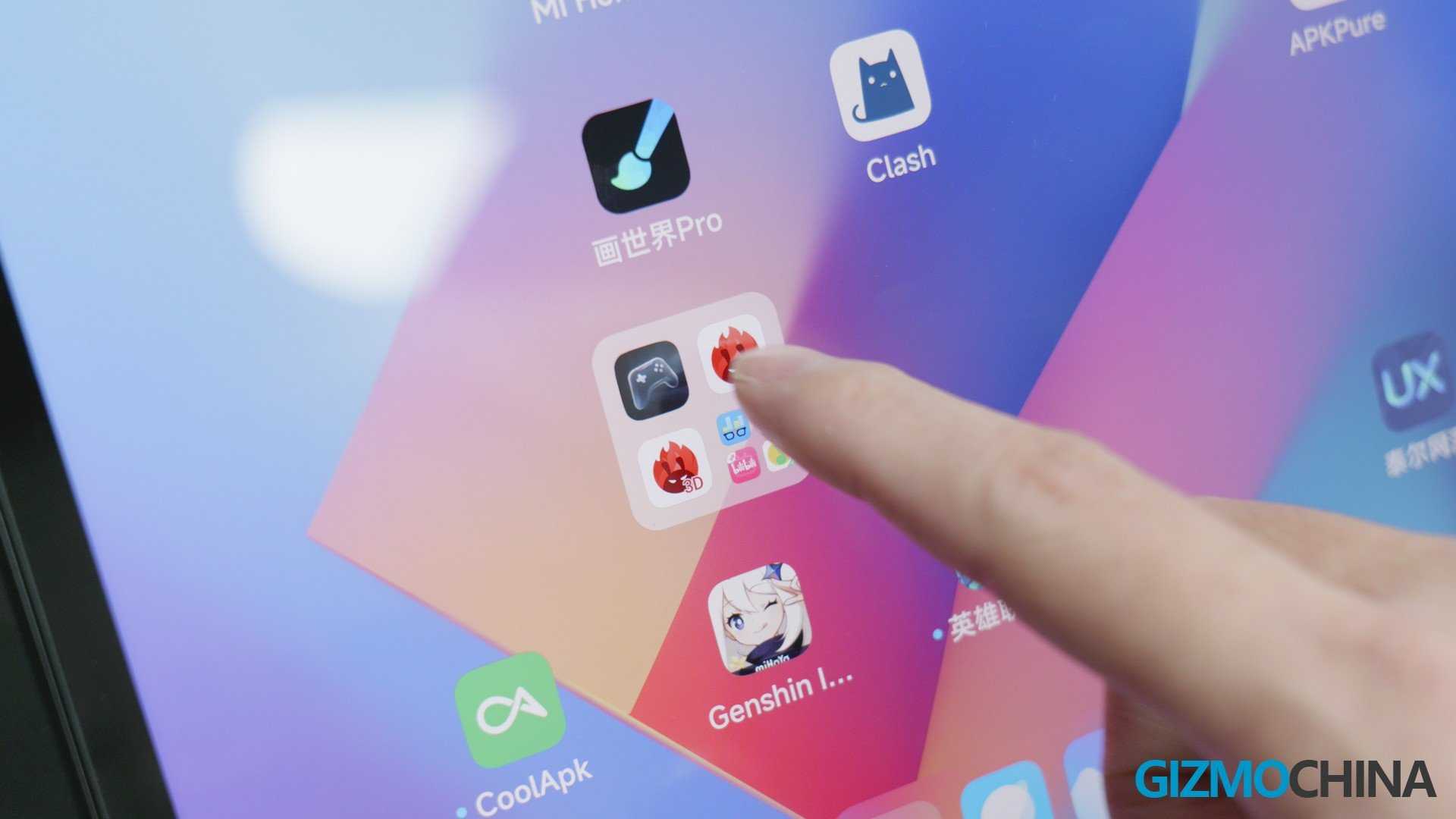
You want to swipe on the folder to see other apps? sorry, there is no such operation, you can only go to the secondary page and open the app inside. Putting the App folder on the Dock is also not allowed.
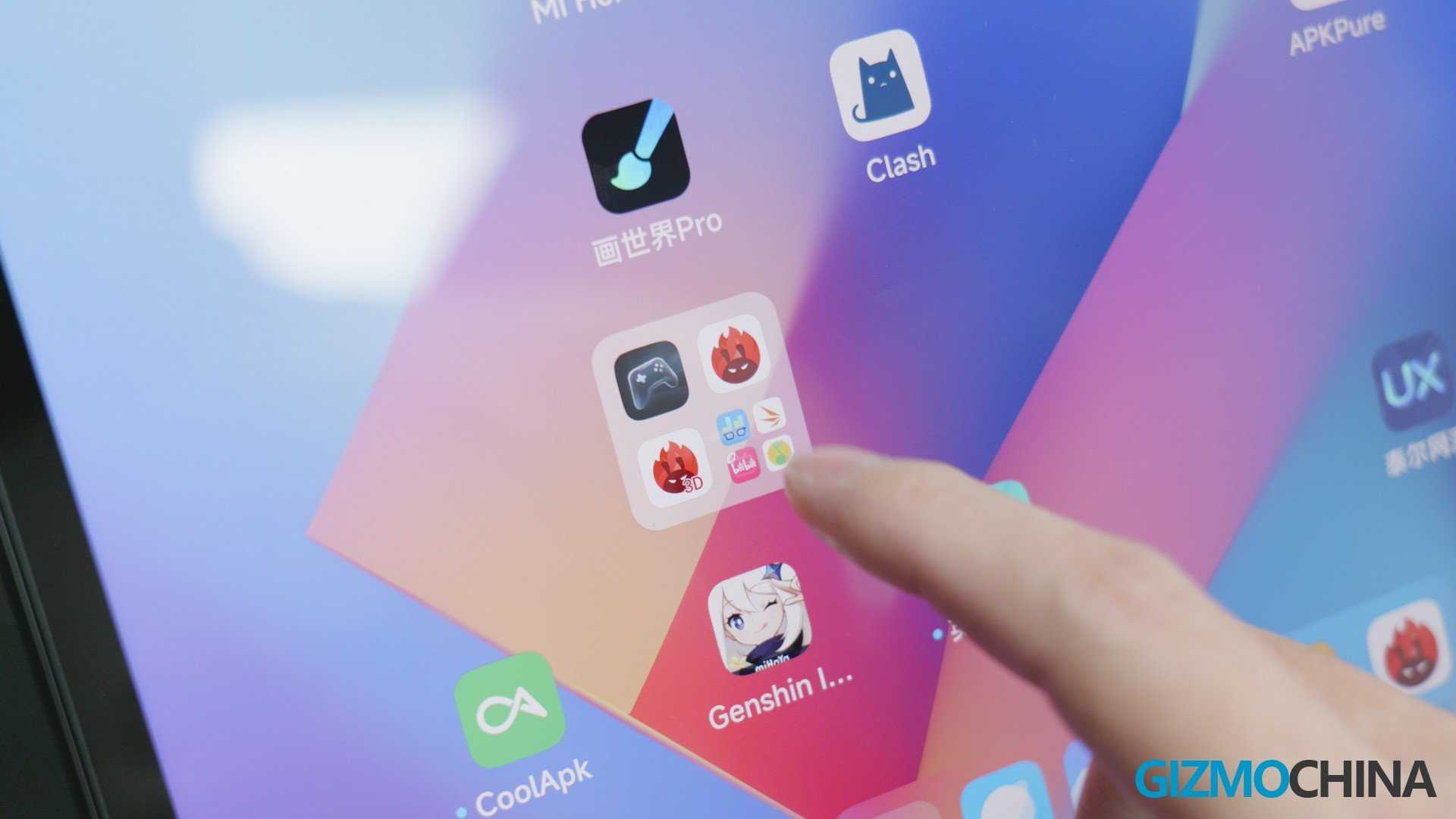
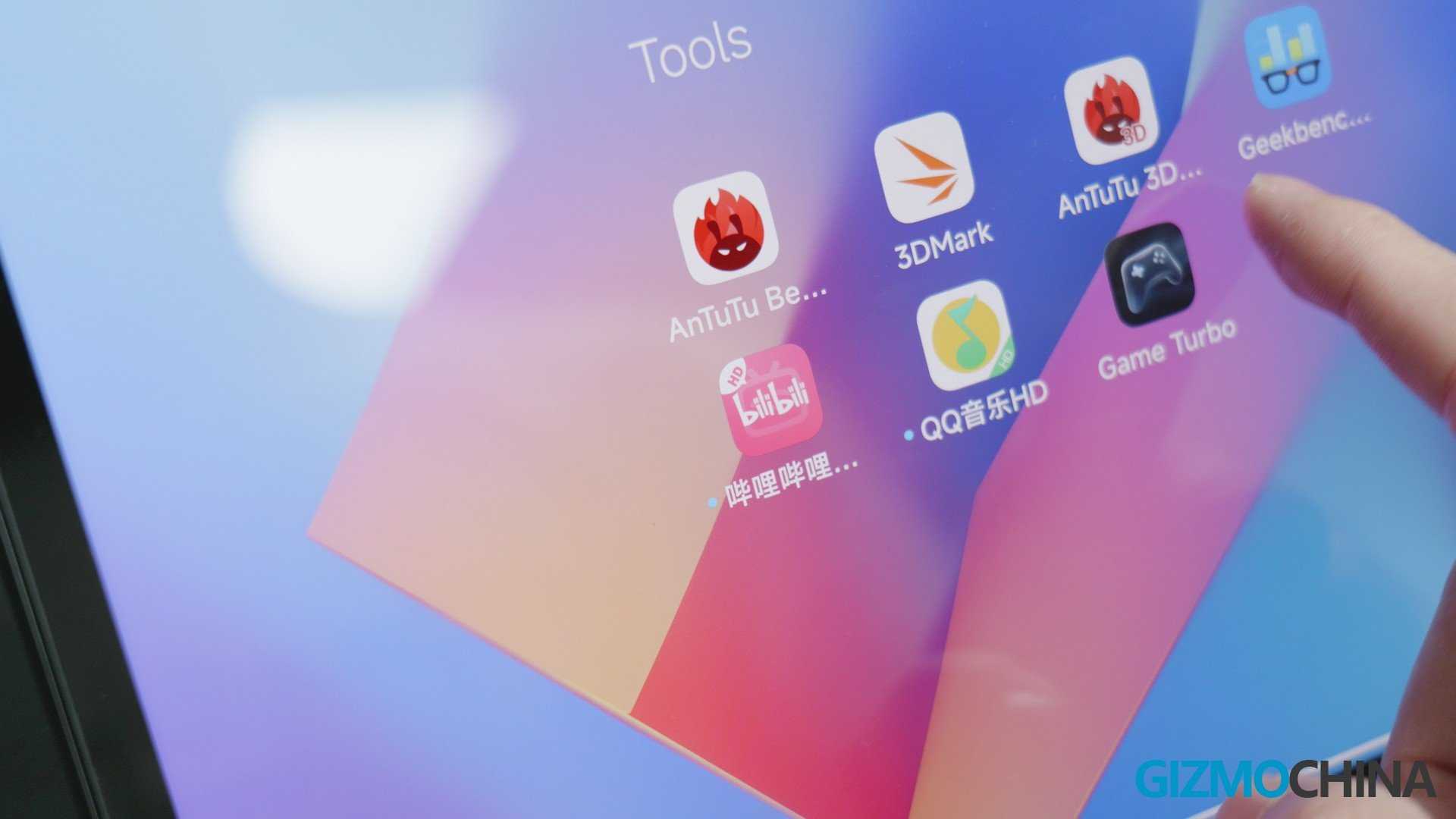

Some problems that we experienced on the Xiaomi Pad 5 still remain in the more basic interactions. If you want to go back to the home screen, you can only swipe up from the center area at the bottom of the screen, and the only function of the both sides of the interaction bar is to call out the Dock. It’s really ridiculous that we even have to complain it again in 2023.
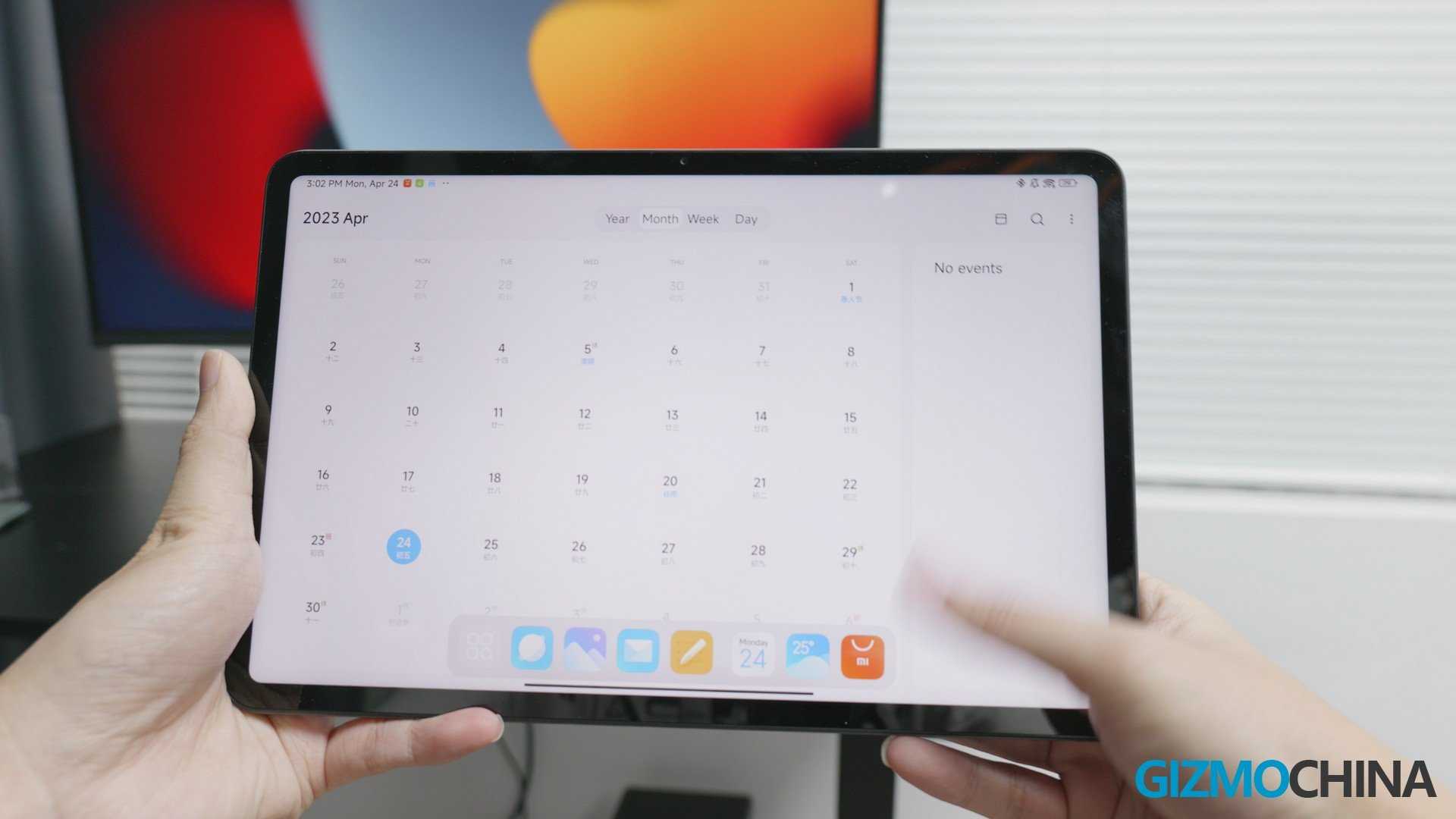
And two years later, Xiaomi still doesn’t know how to get their tablets to correctly identify the direction and humanely swap the volume buttons according to the changes of direction.
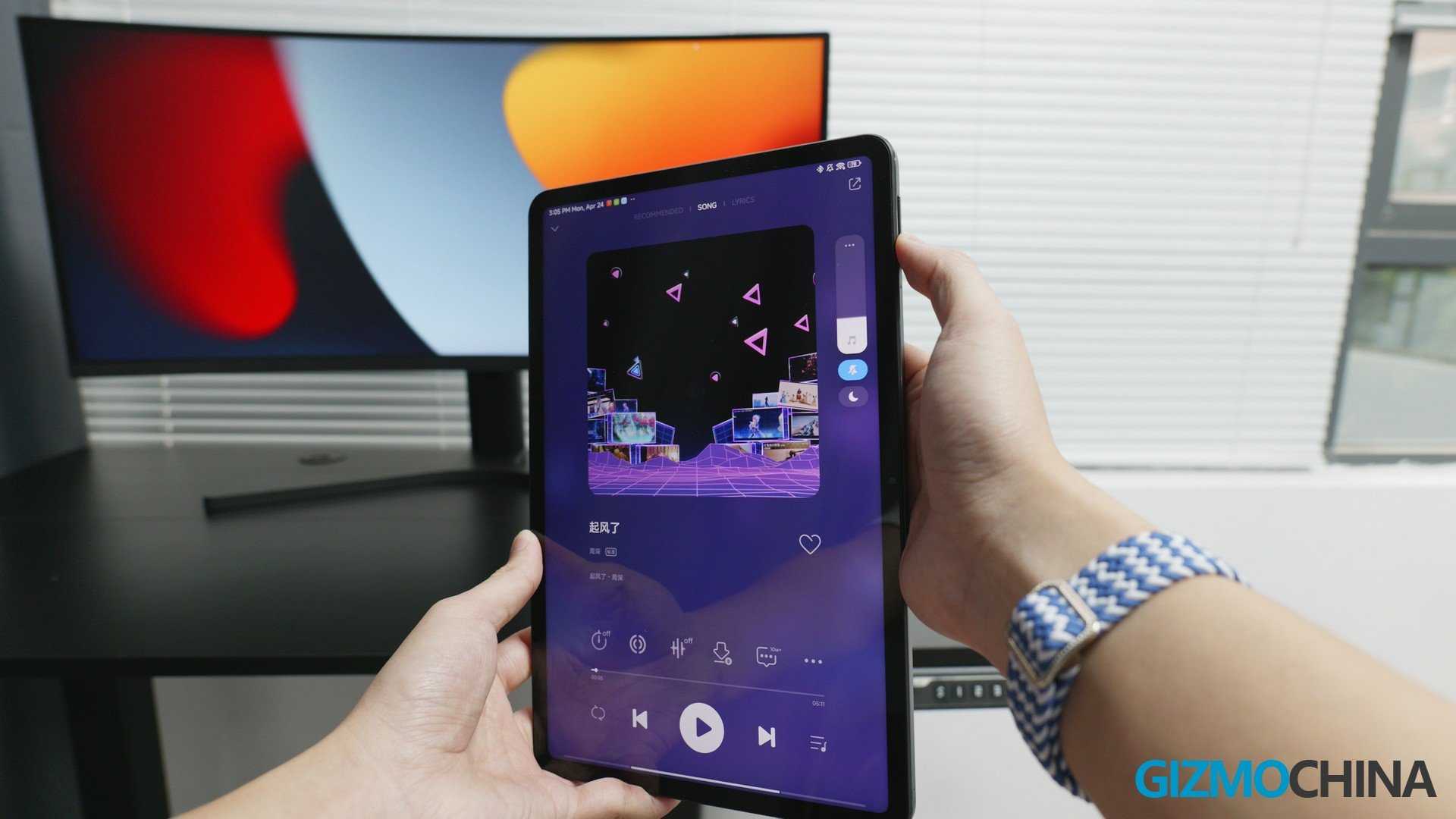
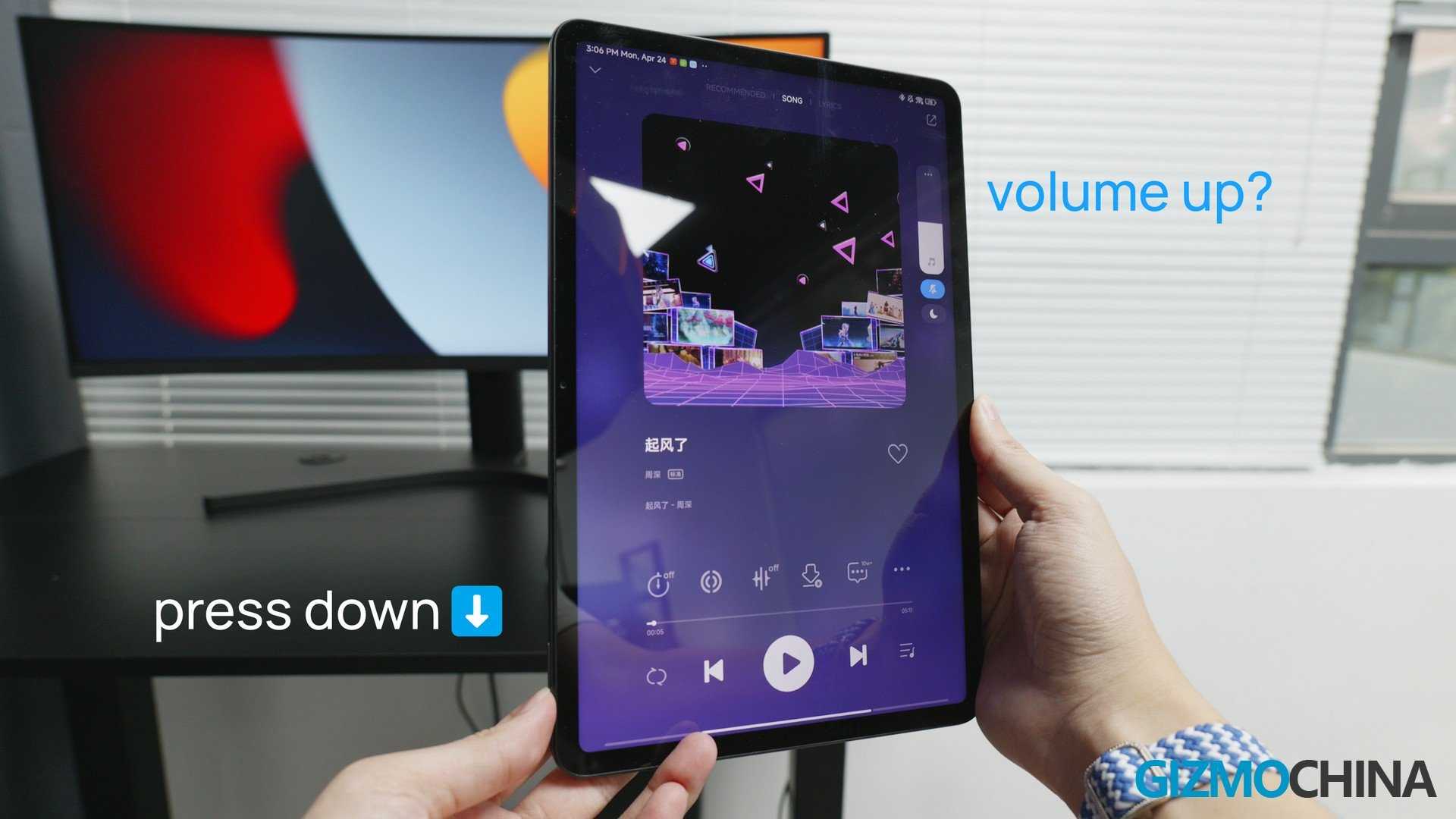
Display
screen size
11″
11″
The size of the screen (measured diagonally).
resolution
1600 x 2560 px
2880 x 1800 px
Resolution is an essential indicator of a screen’s image quality, representing the maximum amount of pixels that can be shown on the screen. The resolution is given as a compound value, comprised of horizontal and vertical pixels.
pixel density
274 ppi
309 ppi
Pixel density is a measurement of a screen’s resolution, expressed as the number of pixels per inch (PPI) on the screen. A higher pixel density translates into more clarity and sharpness for the images rendered on the screen, thus improving the quality of the viewing experience.
Display type
IPS, LCD
LCD, IPS
The type of technology used in the display.
refresh rate
120Hz
144Hz
The frequency at which the display is refreshed (1 Hz = once per second). A higher refresh rate results in smoother UI animations and video playback.
touch sampling rate
Unknown. Help us by suggesting a value. (Xiaomi Pad 5 Pro)
Unknown. Help us by suggesting a value. (Xiaomi Pad 6)
The touch sampling rate is the speed at which a screen can register your touch input and respond by rendering the next frame. Also called the touch refresh rate.
has branded damage-resistant glass
Xiaomi Pad 5 Pro
Xiaomi Pad 6
Damage-resistant glass (such as Corning Gorilla Glass or Asahi Dragontrail Glass) is thin, lightweight, and can withstand high levels of force.
has anti-reflection coating
Xiaomi Pad 5 Pro
Xiaomi Pad 6
This helps to reduce the reflection from your device.
supports HDR10
Xiaomi Pad 5 Pro
Xiaomi Pad 6
HDR10 is an HDR (high dynamic range) video technology. Compared to standard dynamic range (SDR) video, HDR10 video has greater contrast and color depth, resulting in more realistic images.
Дисплей
Дисплей Xiaomi Pad 5 был хорош, но дисплей Pad 6 стал еще лучше. Он обладает разрешением 2880 x 1800 пикселей, более высокой частотой обновления в 144 Гц (что является редкостью для планшетов в этом ценовом сегменте) и улучшенной яркостью 550 нит. Хотя это всё же ЖК-панель и не может предложить такое глубокое черное, как OLED-дисплеи, она все же обеспечивает достаточную яркость.
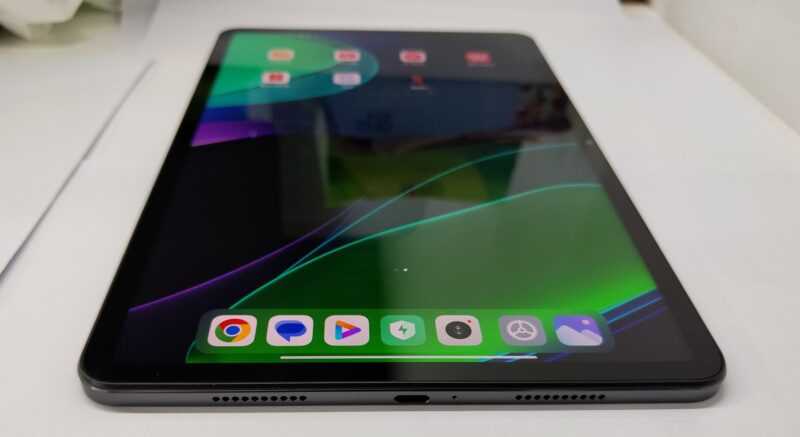
Благодаря поддержке HDR10 и Dolby Vision, просмотр видео высокого качества становится еще лучше. Недостатка в детализации и теней, известного как «Black Crush», как на Pad 5, так и на Pad 6 не наблюдается — эта недоработка была исправлена еще в предыдущей модели.
Display
screen size
11″
11″
The size of the screen (measured diagonally).
resolution
1600 x 2560 px
2880 x 1800 px
Resolution is an essential indicator of a screen’s image quality, representing the maximum amount of pixels that can be shown on the screen. The resolution is given as a compound value, comprised of horizontal and vertical pixels.
pixel density
274 ppi
309 ppi
Pixel density is a measurement of a screen’s resolution, expressed as the number of pixels per inch (PPI) on the screen. A higher pixel density translates into more clarity and sharpness for the images rendered on the screen, thus improving the quality of the viewing experience.
Display type
IPS, LCD
LCD, IPS
The type of technology used in the display.
refresh rate
120Hz
144Hz
The frequency at which the display is refreshed (1 Hz = once per second). A higher refresh rate results in smoother UI animations and video playback.
touch sampling rate
Unknown. Help us by suggesting a value. (Xiaomi Pad 5 Pro)
Unknown. Help us by suggesting a value. (Xiaomi Pad 6 Pro)
The touch sampling rate is the speed at which a screen can register your touch input and respond by rendering the next frame. Also called the touch refresh rate.
has branded damage-resistant glass
Xiaomi Pad 5 Pro
Xiaomi Pad 6 Pro
Damage-resistant glass (such as Corning Gorilla Glass or Asahi Dragontrail Glass) is thin, lightweight, and can withstand high levels of force.
has anti-reflection coating
Xiaomi Pad 5 Pro
Xiaomi Pad 6 Pro
This helps to reduce the reflection from your device.
supports HDR10
Xiaomi Pad 5 Pro
Xiaomi Pad 6 Pro
HDR10 is an HDR (high dynamic range) video technology. Compared to standard dynamic range (SDR) video, HDR10 video has greater contrast and color depth, resulting in more realistic images.
Дизайн
- OnePlus Pad: 552 грамма, корпус из алюминиевого сплава с ЧПУ, цветовая гамма Halo Green
- Xiaomi Pad 5: 511 грамм, алюминиевая рама, пластиковая задняя панель, цвета Pearl White или Cosmic Grey.
OnePlus Pad имеет более премиальный дизайн с полностью алюминиевой задней частью, обработанной на станках с ЧПУ, тогда как Xiaomi Pad 5 имеет пластиковую заднюю часть и алюминиевый бампер в стиле iPhone.
Однако дизайн планшета OnePlus более характерен, что может несколько ограничить его привлекательность. Он доступен только в цветовой гамме, которую бренд называет Halo Green, с круговым рисунком, исходящим от центрального модуля камеры планшета.
Xiaomi Pad 5, с другой стороны, играет безопаснее с простым выбором темно-серого и белого цветов. Нам очень нравится дизайн OnePlus Pad, но мы также можем представить, что людей отталкивает его цвет. В этом случае лучшее, на что вы можете надеяться, это случай, который скроет это.
Оба планшета довольно легкие, особенно учитывая их размер. Разница в весе всего 10 грамм, и на практике вы вряд ли заметите разницу.
Design
weight
515 g
490 g
We consider a lower weight better because lighter devices are more comfortable to carry. A lower weight is also an advantage for home appliances, as it makes transportation easier, and for many other types of products.
thickness
6.9 mm
6.5 mm
The thickness (or depth) of the product.
width
254.7 mm
254 mm
The width represents the horizontal dimension of the product.
height
166.3 mm
165.2 mm
The height represents the vertical dimension of the product.
volume
292.26 cm³
272.75 cm³
Volume is the quantity of three-dimensional space enclosed by the product’s chassis or, in simpler terms, the space the product occupies.
Stylus included
Xiaomi Pad 5 Pro
Xiaomi Pad 6
A stylus is a pen-like accessory that allows you to interact with the touchscreen with greater precision, and is particularly useful for drawing and writing.
Has a detachable keyboard
Xiaomi Pad 5 Pro
Xiaomi Pad 6
You can detach the keyboard of your device and use the screen as a tablet. Detaching the keyboard makes the device lighter and gives you the possibility to switch easily between laptop-mode and tablet-mode. The keyboard is included when buying the device.
Has a backlit keyboard
Xiaomi Pad 5 Pro
Xiaomi Pad 6
The keyboard is backlit, making it easier to type in the dark or dim lighting.
is dustproof and water-resistant
Xiaomi Pad 5 Pro
Xiaomi Pad 6
The device is dustproof and water-resistant. Water-resistant devices can resist the penetration of water, such as powerful water jets, but not being submerged into water.
Performance
For a Xiaomi product, there’s no need to worry about its performance in the same price range. Powered by the Snapdragon 8+ Gen1 platform, the Xiaomi Pad 6 Pro is perhaps the best Android gaming tablet, or at least, one of the best in the following months.
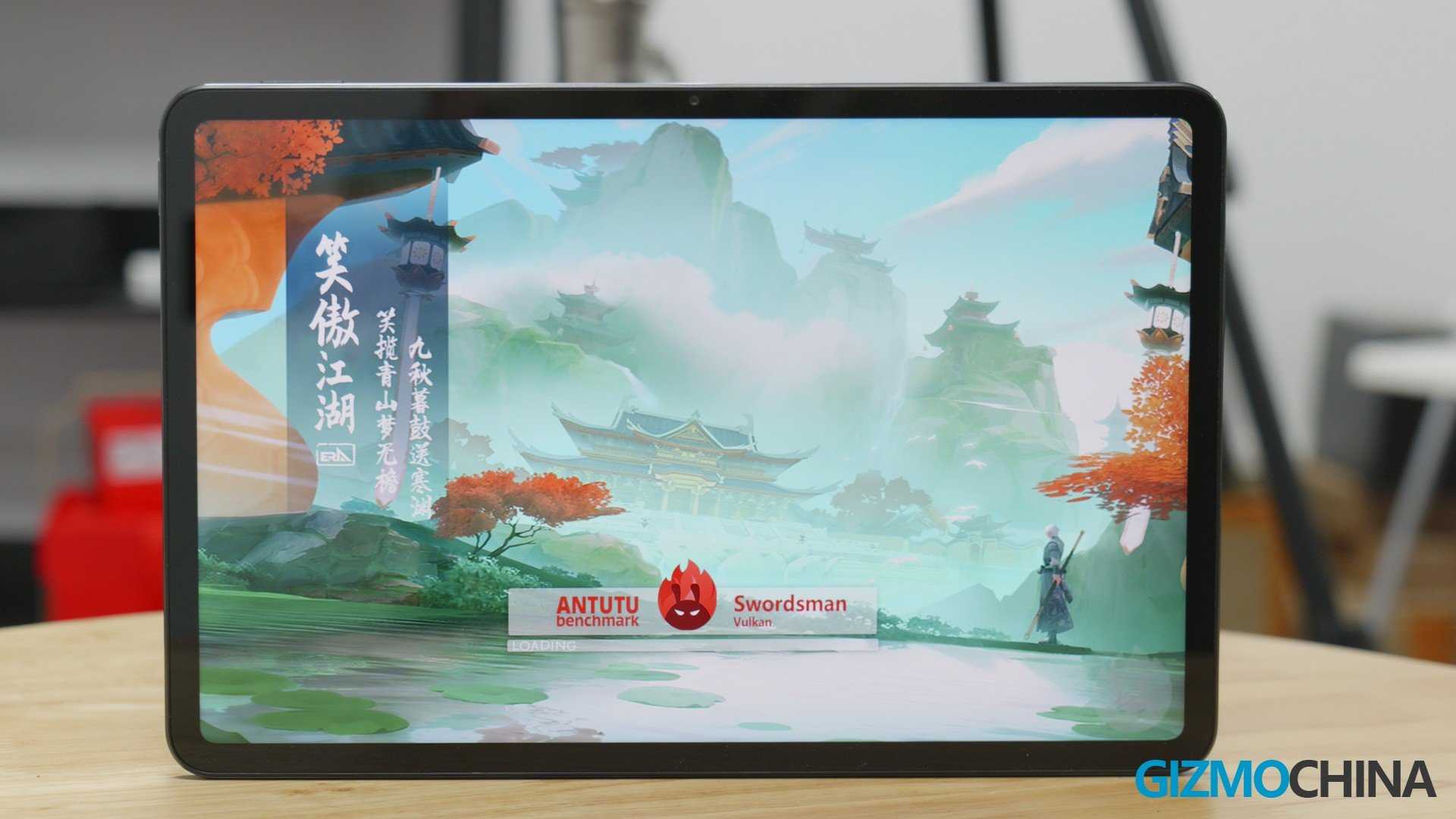
From these Benchmarks we can see that compared to tablets with Snapdragon 870 and Dimensity 9000, it has an obvious lead. And more importantly, the better power efficiency of Snapdragon 8+ Gen1 brings more stable performance in games and heavy loading.
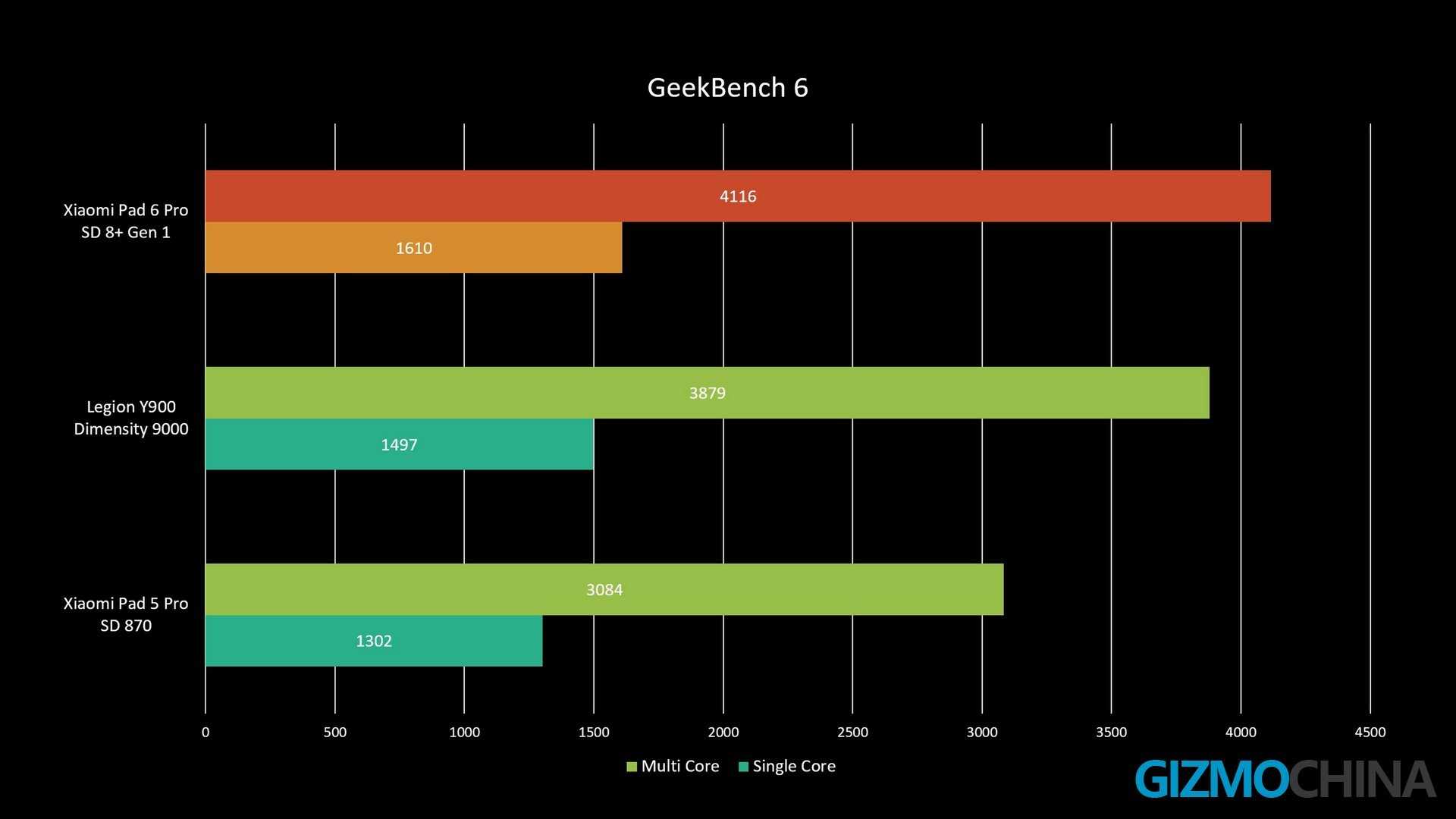
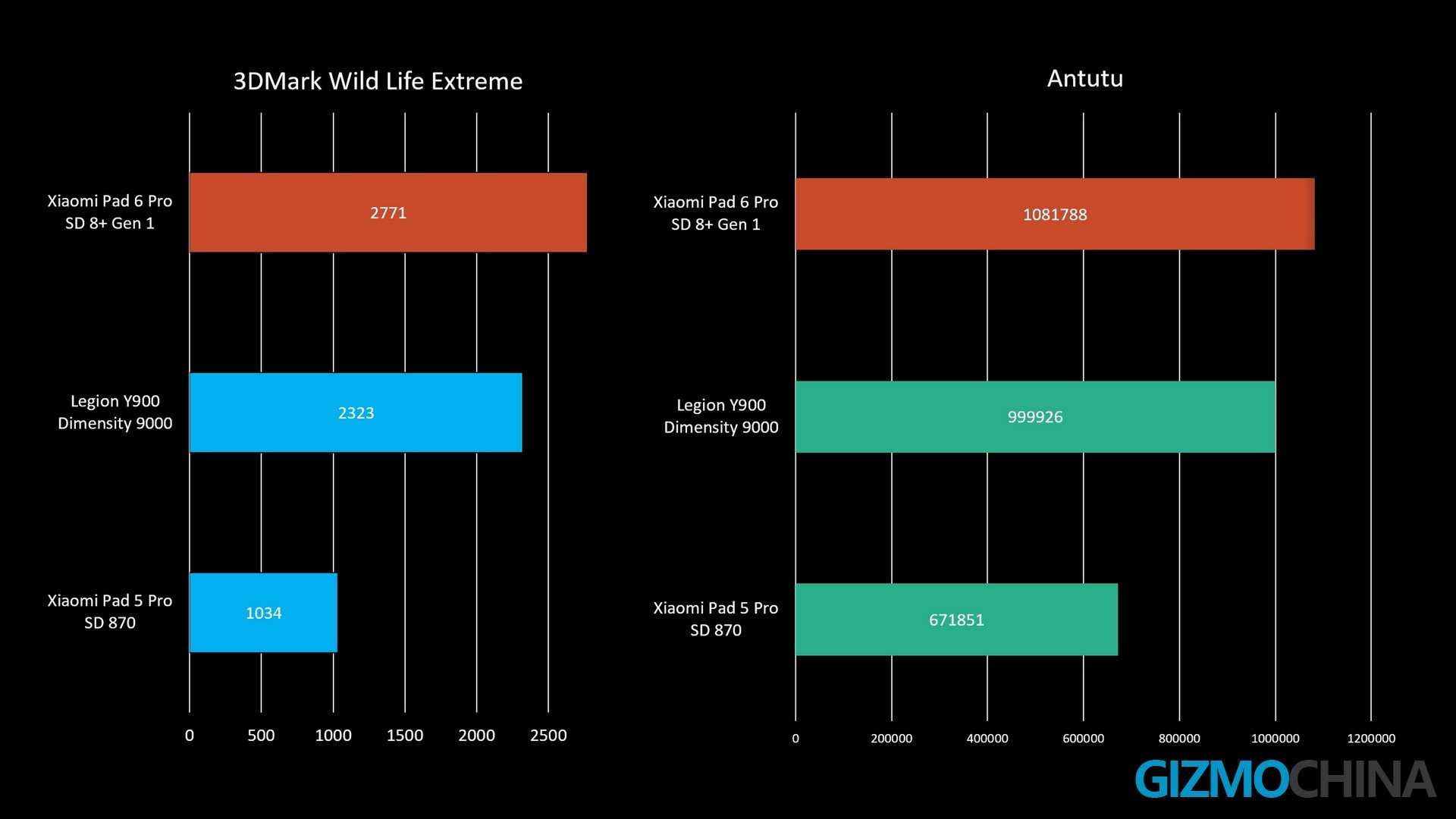
For example, in Genshin Impact, the Xiaomi Pad 6 Pro achieves an almost flat frame rate, which is even better than many Snapdragon 8 Gen 2 phones thanks to the good cooling. Except for the game loading at the very beginning, you hardly feel any lag, and the perceivable heat during the game is concentrated in a very small area in the upper right corner of the tablet, so you can get a very good gaming experience.
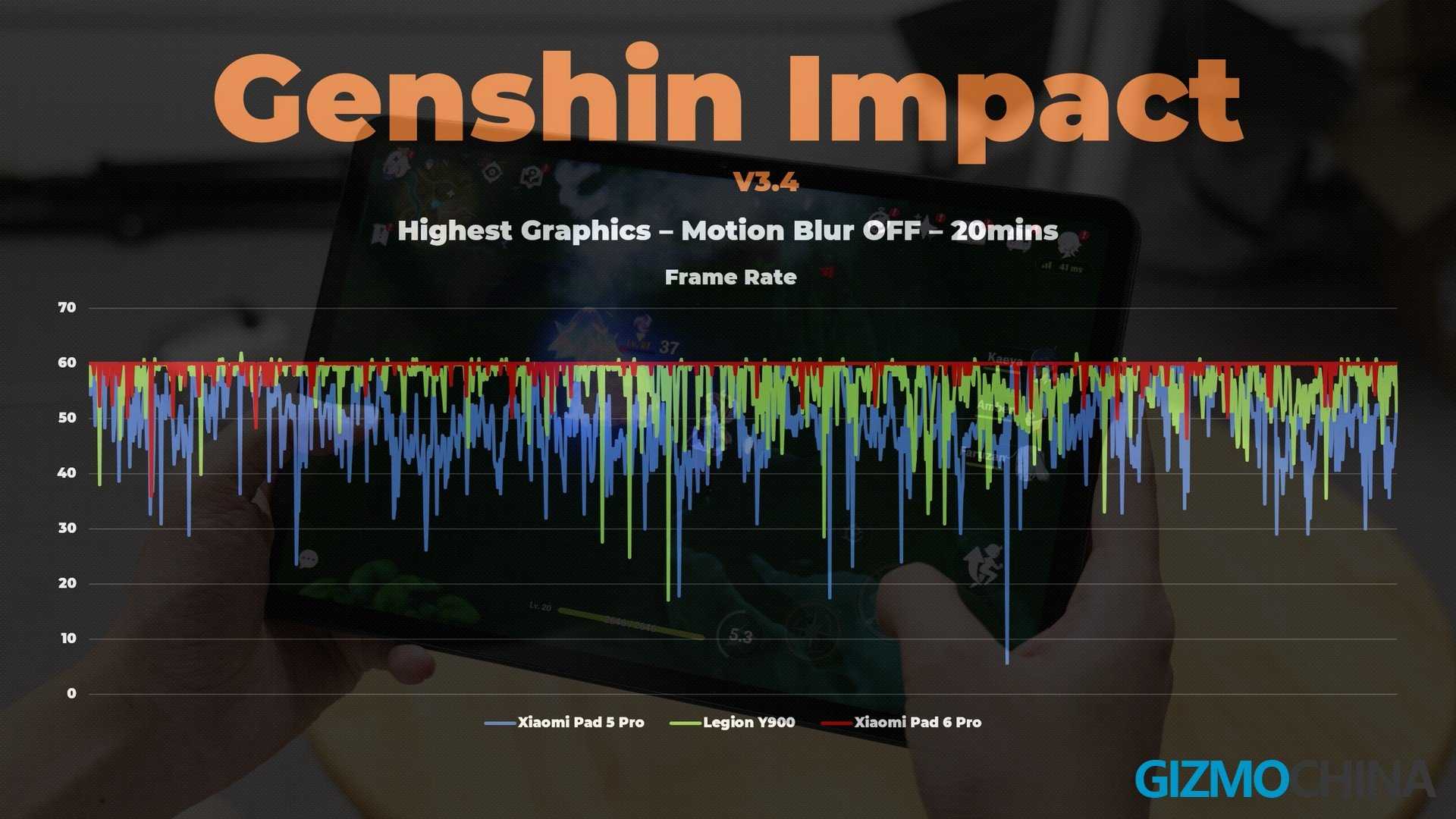
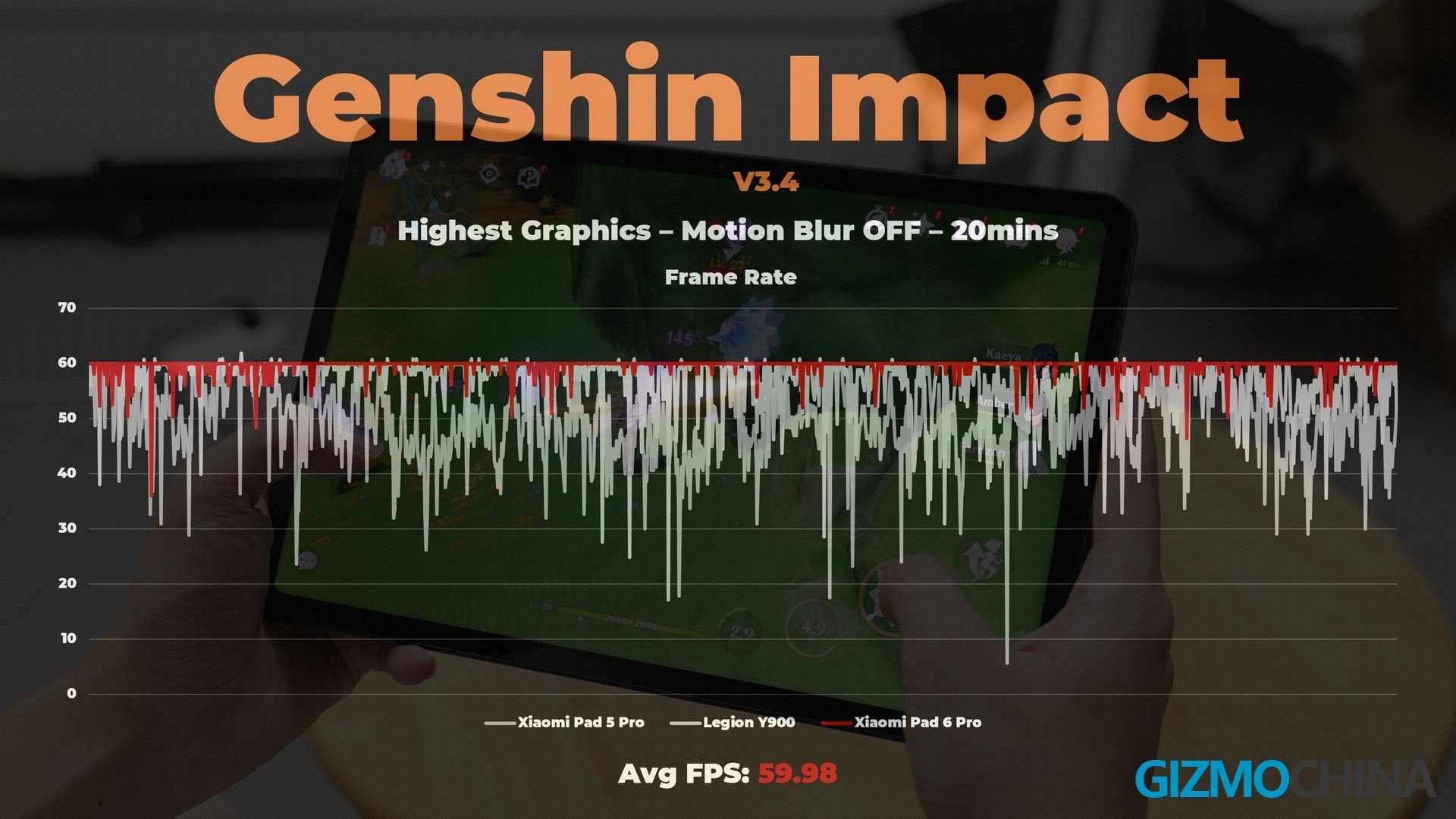
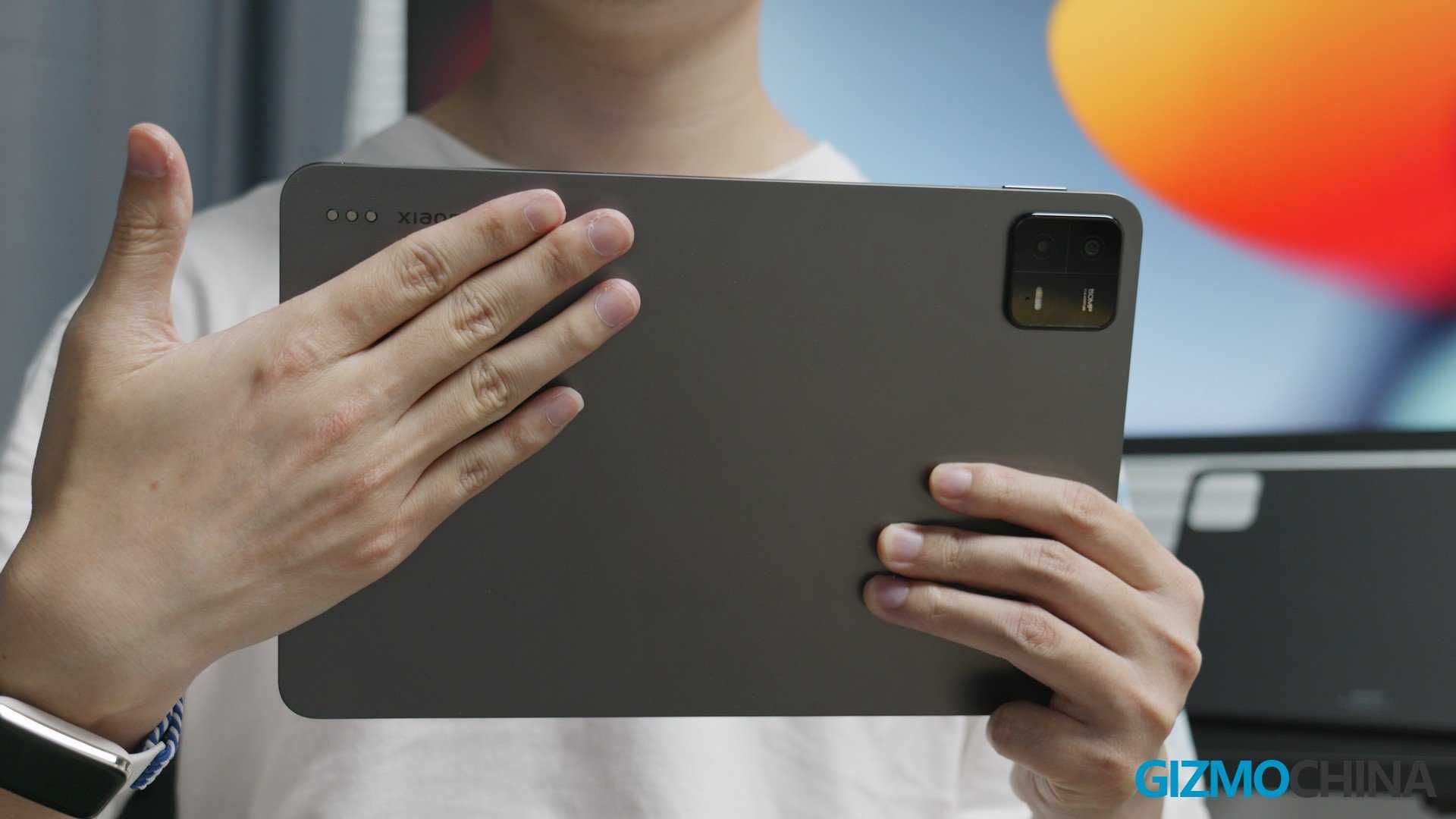
I believe that if Xiaomi could launch a mini pad with an 8-inch screen, it would be a better gaming device than the iPad mini, just like the Lenovo’s Y700 gaming tablet.
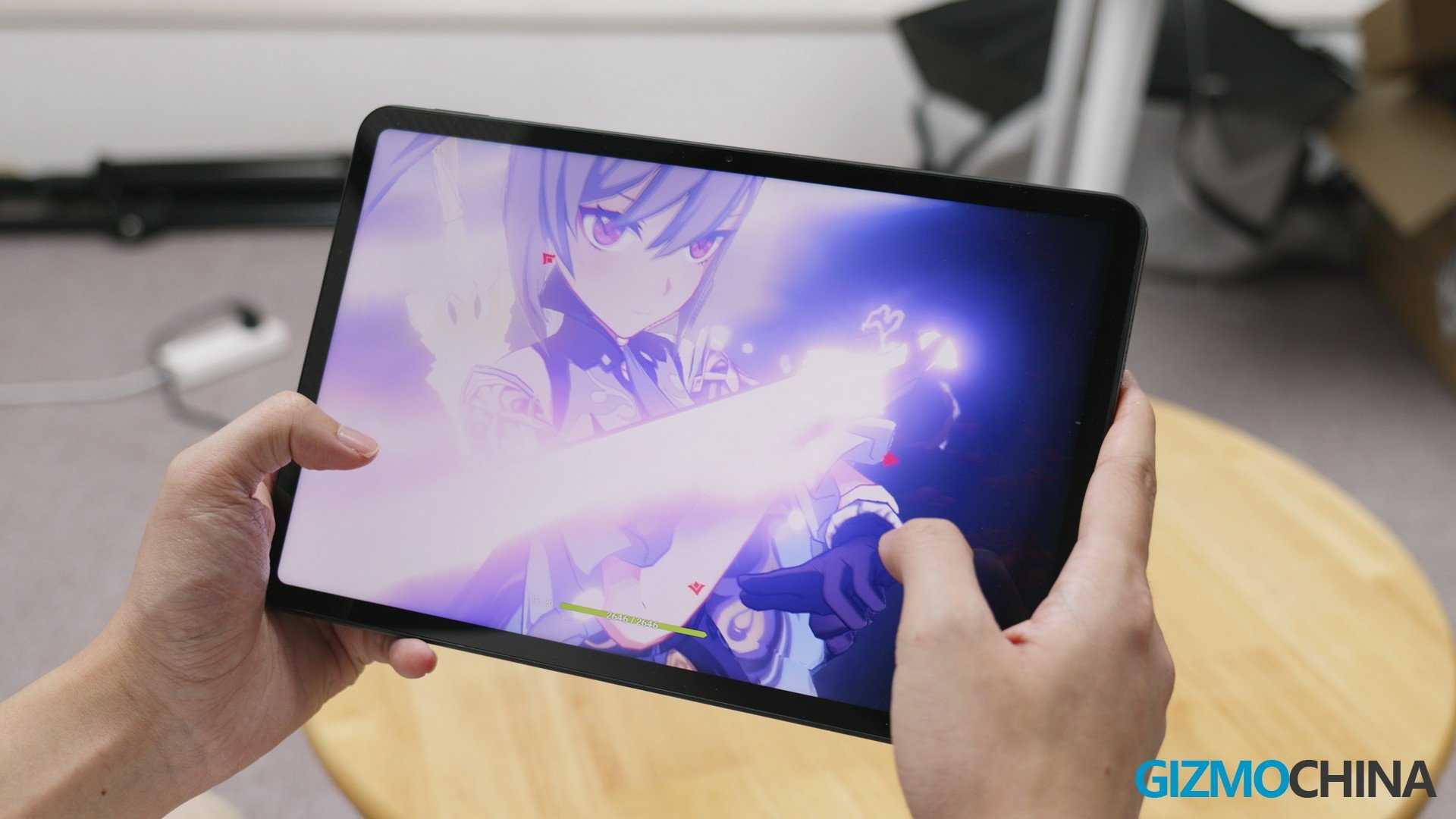
Дисплей и динамики
- OnePlus Pad: 11,61 дюйма, соотношение сторон 7:5, 144 Гц, поддержка Dolby Vision, четыре динамика
- Xiaomi Pad 5: 11 дюймов, 16:10, 120 Гц, поддержка Dolby Vision, четыре динамика
OnePlus Pad — первый планшет с почти квадратным экраном с соотношением сторон 7:5. OnePlus называет его ReadFit и говорит, что он обеспечивает лучший опыт чтения среди всех планшетов благодаря дополнительной высоте. Это означает, что независимо от того, просматриваете ли вы веб-страницы или читаете электронную книгу, OnePlus Pad должен отображать больше информации на экране.
Xiaomi Pad 5 имеет более традиционное соотношение сторон 16:10, и хотя у него не будет тех преимуществ, о которых говорилось выше, он будет лучше использовать экран во время воспроизведения видео, поскольку контент 16:9 будет иметь меньшие черные полосы.
OnePlus Pad также является первым планшетом с высокоскоростным дисплеем с частотой обновления 144 Гц, который сделает навигацию по системе плавной и улучшит игровой процесс. Тем не менее, Xiaomi Pad 5 тоже не дурак, предлагая 120 Гц, что дает почти такой же опыт.
Оба дисплея поддерживают HDR-контент и воспроизведение Dolby Vision, и оба планшета имеют четыре массива динамиков, которые также поддерживают Dolby Atmos. Тем не менее, OnePlus может иметь преимущество со звуком, поскольку его запатентованная технология Omnibearing Sound Field автоматически настраивает левый и правый каналы в соответствии с ориентацией дисплея.
OnePlus
Дизайн
Дизайн Xiaomi Pad 5 очень схож с iPad Pro, только тыльная часть выполнена из красивого, но довольно маркого матового пластика. Всего доступно 3 цвета: серый, зеленый, белый.
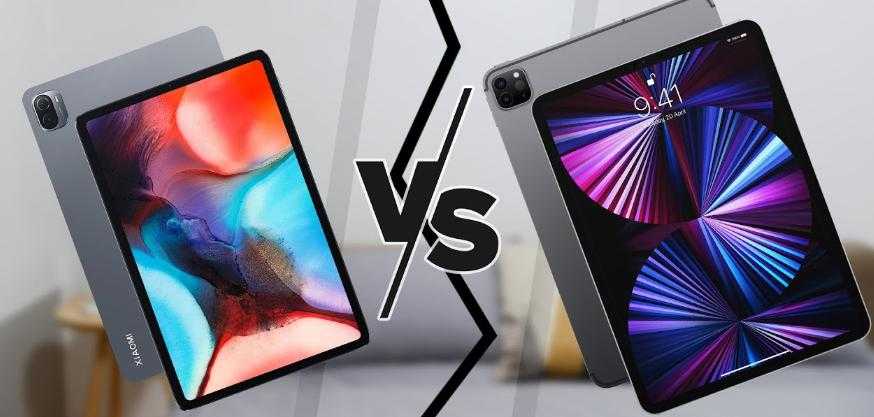
В целом никаких претензий к пластику у меня нет, к тому же его сложно отличить от матового стекла, как на iPhone 13.
Стекло лицевой панели сильно выпирает – и разбить такое легче, и тактильно не очень приятно. Я так понимаю, у Xiaomi была задумка сделать планшет визуально тоньше.
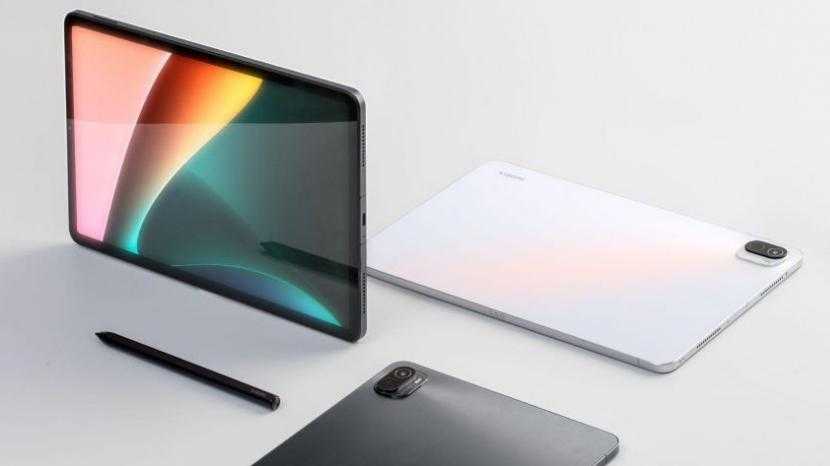
С точки зрения визуала получилось весьма неплохо, но на практике выпирающий дисплей и выглядит не очень, и ощущается так же.
Физических кнопок 2: питание и нераздельная кнопка регулировки громкости. Берите пример с iPad Pro, где 2 кнопки громкости, и в темноте их не перепутать с кнопкой питания.
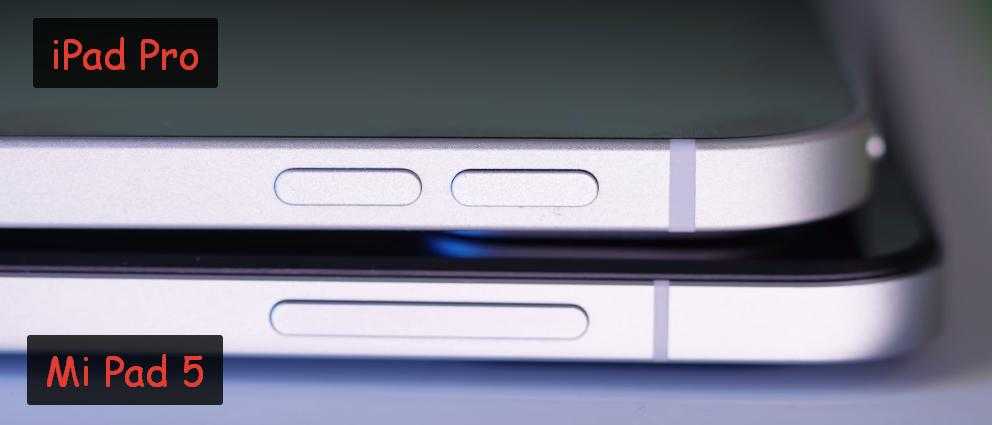
На корпусе Mi Pad 5 есть группа контактов для подключения физической клавиатуры.
Сколько придется заплатить
Все прочие спецификации, включая объем оперативной памяти и встроенного накопителя, количество и параметры модулей беспроводной связи, наличие или отсутствие поддержки сотовых сетей и пр., Xiaomi обнародует во время официальной премьеры. Когда именно следует ждать появления Pad 6 и Pad 6 Pro в России, предсказать невозможно – они могут приехать сразу после премьеры в Китае или задержаться на несколько месяцев. У Xiaomi есть и тот, и другой опыт – к примеру, новейшие (для российской розницы) смартфоны серии Redmi Note 12 вышли спустя три месяца с момента официального релиза в КНР и Индии.
Фото: Xiaomi
Xiaomi, в отличие от Lenovo и Huawei, не спешит покидать Россию из-за санкций Запада
Pad 5, как сообщал CNews, преодолел путь из Китая в Россию всего за месяц. На родине он вышел в сентябре 2021 г., а в российской рознице появился октябре 2021 г.
Что касается стоимости, то она на 14 апреля 2023 г. известна не была. Но, как утверждают эксперты GizChina, надеяться на то, что цена планшетов окажется на уровне Pad 5 и Pad 5 Pro, не стоит – новые модели окажутся дороже.
В настоящее время Pad 5 стоит в Китае от 1999 юаней (23,7 тыс. руб., $290 по курсу ЦБ на 14 апреля 2023 г.). Pad 6 в базовой комплектации китайские ритейлеры предлагают за 2499 юаней ($363, 29,6 тыс. руб.). Как видно, в России Pad 5 стоит на 7000 руб. дороже, чем в КНР – вполне возможно, что столько же придется переплатить и за Pad 6.
Много интересного внутри
В числе отличий Pad 6 от Pad 6 Pro будет центральный процессор. В младшей модели, пишет GizChina, окажется Qualcomm Snapdragon 870 – он заменит Snapdragon 860 в нынешнем Pad 5. Старший Pad 6 Pro обзаведется чипом Snapdragon 8+ Gen1, создававшемся, в большей степени, для ноутбуков, а не для планшетов.
Pad 6 Pro, по предварительной информации, будет работать от большой батареи емкостью 8600 мАч, которую в GizChina назвали «монструозной» (MONSTROUS). По сравнению с Pad 5, где установлена АКБ н 8720 мАч, произошел небольшой даунгрейд по емкости, но зато добавилась очень быстрая зарядка на 67 Вт.
По всей вероятности, Xiaomi поработала над оптимизацией потребления планшетом заряда аккумулятора – в режиме ожидания, когда он включенный просто лежит на полке и не эксплуатируется, одного заряда хватит на 48 дней.
Display & Speakers
Let’s move on to the displays. The Xiaomi Pad 6 and 5 each have an 11-inch display, while the Redmi is a bit smaller at 10.61 inches. The latter also has the lowest resolution at 2000 x 1200 pixels, followed by 2560 x 1600 pixels on the 5 and a full 2880 x 1800 pixels on the 6. So, the Pad 6 is the sharpest and you can clearly see that especially compared to the Redmi.
The Redmi Pad has a 90Hz display, while we get 120Hz on the Pad 5 and even 144Hz on the Pad 6. So, regarding this, Xiaomi is very well positioned across all price ranges.
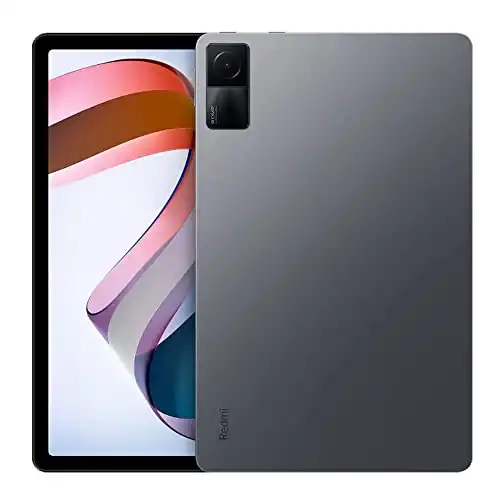
Xiaomi Redmi Pad
The Xiaomi Redmi Pad is a great mid-range tablet. Even though it’s very affordable, it offers a premium metal body, the 10-inch screen supports 90Hz, and the performance is great for most games. In addition to that, we get four good speakers, up-to-date software with updates, and a long battery life. Sadly, you cannot open two apps side by side with the 3GB RAM version. That’s a pitty.
Buy on Amazon
Our Review
In general, these are really good displays for their prices. They’re all laminated, all pretty bright, and all look good. The Pad 6 has a slightly warmer display than the Pad 5 and the Redmi looks a bit too bluish. The latter also doesn’t have quite as stable viewing angles as the more expensive two.
I could not notice any difference between the four speakers of the Pad 5 and 6. And the Redmi Pad also comes surprisingly close – but in direct comparison, the sound doesn’t sound quite as full and the bass not quite as strong.
Комплектация и дизайн
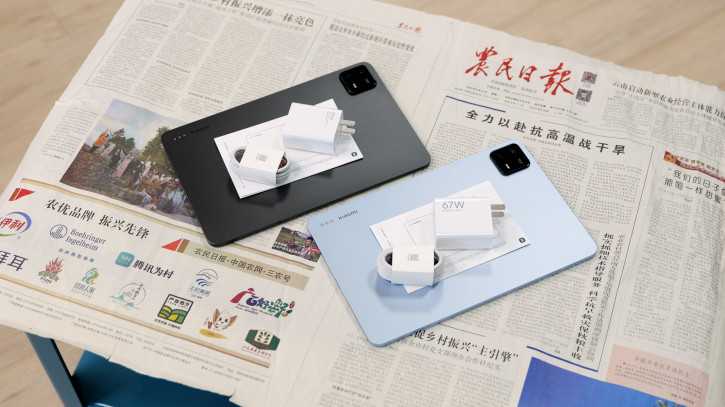
Планшеты поставляются в абсолютно одинаковых белых картонных коробках, разве что название девайса отличается. У Pro-версии, кстати, слова Pad и Pro на упаковке почему-то написаны разным шрифтом. Комплектация тоже одинаковая, если не считать мощность зарядного устройства: планшет, кабель, блок, документация. Зарядка – 33 Вт у Xiaomi Pad 6 и 67 Вт у Xiaomi Pad 6 Pro.
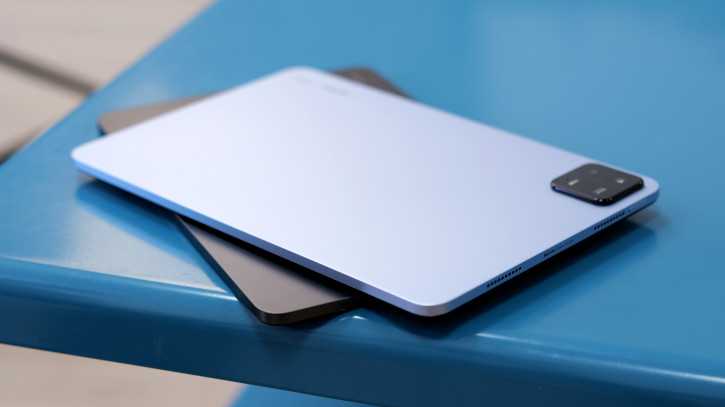
Корпуса у планшетов абсолютно одинаковые; обе модели доступны в чёрном, голубом и золотистом исполнениях. Хотя названия цветов довольно условные: наш Xiaomi Pad 6 скорее серый, нежели чёрный, а Pad 6 Pro – скорее серебристый, нежели голубой. Спинка и торцы планшета – цельный кусок алюминия; благодаря отсутствию сотового модема антенны удалось вывести через одну маленькую пластиковую вставку на торце.
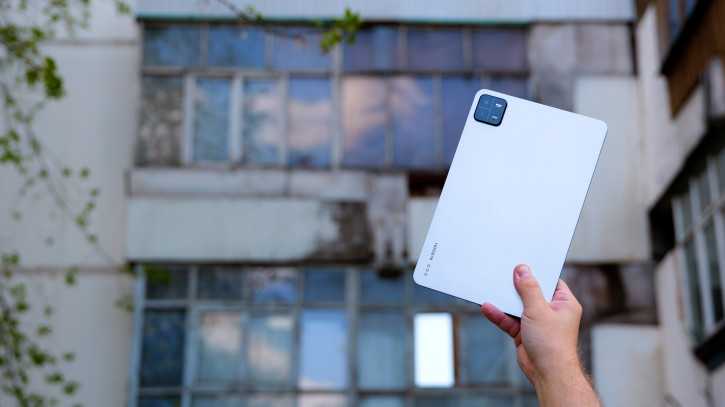
В руках планшет лежит хорошо; он не слишком тонкий (6,5 мм) и довольно лёгкий (490 г). Торцы не режут руку, пальцы не генерируют ложные касания по краям дисплея, из рук девайс не выскальзывает. Красота. По коротким торцам расположены четыре независимых динамика, создающих пространственное звучание. На одном из торцов компанию динамикам составили порт USB Type-C и микрофон, на другом – кнопка блокировки. У Xiaomi Pad 6 Pro в неё встроен сканер отпечатков пальцев, но в его реализации есть странность: из заблокированного состояния планшет выводится не касанием сканера, а нажатием на него. У Pad 6 дактилоскопа нет.
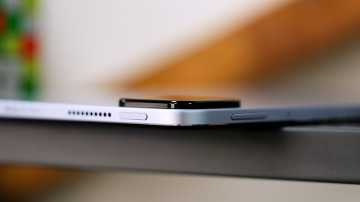
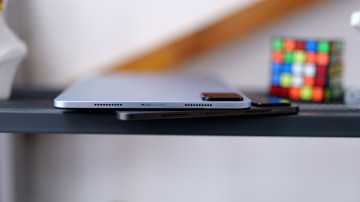
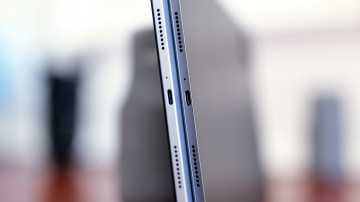
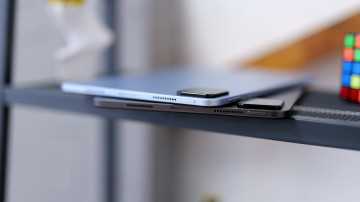
Качелька регулировки громкости расположена на длинной стороне, «за углом» от кнопки блокировки. Такое расположение потребует привыкания, особенно учитывая, что планшет практически симметричен и вы будете часто брать его разными сторонами. На той же стороне расположены ещё два микрофона; видимо, Xiaomi решила скучковать их возле фронтальной камеры, как это делают в ноутбуках. Ещё есть направленный микрофон на модуле камеры, итого четыре микрофона. Неплохо!
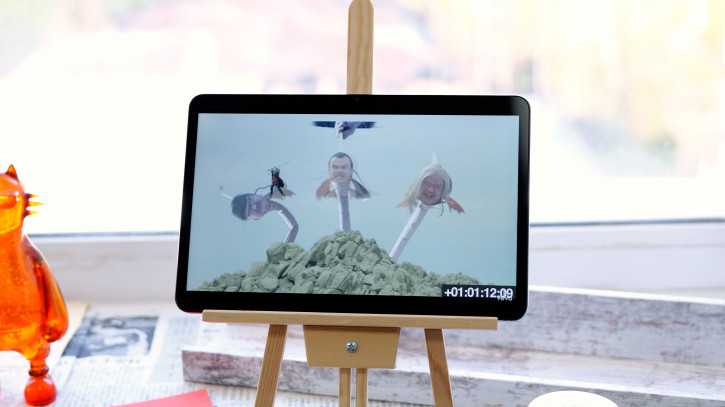
11″ экран имеет соотношение сторон 16:10 (14,4:9, 2880х1800 точек) и прикрыт стеклом Gorilla Glass 3 (как в Galaxy S4; не Tab S4, а просто S4). Панель выполнена по технологии IPS и имеет яркость до 550 нит, что сильно ограничивает возможность использовать планшет на открытом воздухе. Зато частота что надо – 144 Гц. В настройках есть четыре режима (60, 90, 144, авто); в авто некоторые приложения работают со сниженной частотой (60 Гц в YouTube, 90 Гц в Chrome), поэтому советую поставить постоянные 144 Гц. Что необычно для IPS, герцовка динамическая, то есть в простое может падать до 50 Гц или даже 30 Гц в «Камере». Тач — 144 Гц, когда у экрана 144 Гц, и 120 Гц всё остальное время.
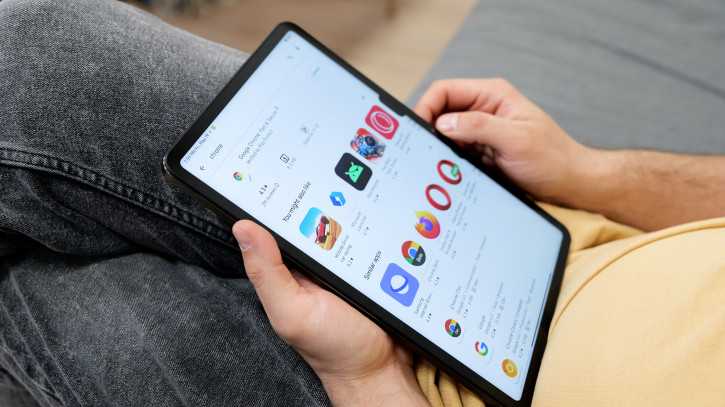
Мучаться с классным размещением вибромоторчиков по разным углам корпуса в Xiaomi не стали, а поскольку одинокий вибромотор в таком корпусе воспринимается скорее нелепо, чем полезно (жужжит себе где-то в углу), решили не ставить даже его. В общем, Pad 6 и Pad 6 Pro лишены какого бы то ни было виброотклика. Если вам сильно нужна реакция на ваши касания, в настройках можно включить звуковой сигнал на каждый тап.
Display
- Both tablets have IPS screens.
- Xiaomi Pad 6 Pro has a 2.8K resolution and a 144Hz refresh rate.
- Xiaomi Pad 5 Pro has a 2.5K resolution and a 120Hz refresh rate.
- The visual differences between the two screens are minimal, especially when consuming multimedia content.
The Pad 6 Pro offers an upgrade with a higher resolution 2.8K screen, resulting in sharper images and more accurate colors. The 11-inch display delivers an almost identical visual experience as Xiaomi’s latest phones and TVs. However, it is worth noting that the Pad 6 Pro has only half the number of speaker units compared to its predecessor, resulting in slightly less detailed sound.
Specifications
| Xiaomi Pad 5 Pro | Xiaomi Pad 6 Pro | |
|---|---|---|
| Released | 2021, August 10 | 2023, April 30 |
| Dimensions | 254.7 x 166.3 x 6.9 mm | 254 x 165.2 x 6.5 mm |
| Weight | 515g | 490 g |
| Screen | 11 inch IPS | 11 inch IPS |
| Pixels | 2560 x 1600 pixels | 1800 x 2880 pixels |
| Refresh rate | 120Hz | 144Hz |
| Protection | No | Corning Gorilla Glass 3 |
| Processor | Snapdragon 870 | Snapdragon 8+ Gen 1 (4 nm) |
| Storage | Upto 256 GB | Upto 512 GB |
| RAM | 6, 8GB RAM (LPDDR5) | 8, 12GB RAM (LPDDR5) |
| Camera | Rear: 50 MPFront: 8MP | Rear: 50 MPFront: 20MP |
| Bluetooth | Bluetooth 5.2 | Bluetooth 5.3 |
| Connectivity | Single SIM 4G & 5G, Wifi 6 | No cellular connectivity |
| Fingerprint sensor | Yes | Yes |
| Speaker | 8 speakers | 4 speakers |
| Battery pack | 8600mAh, 67W | 8600mAh, 67W |
| Colors | Black, White | Black, Blue, Gold |
Выводы
Xiaomi Pad 6 и Pad 6 Pro — отличные 11″ планшеты с топовым железом, классными IPS-экранами, качественными динамиками, цельнометаллическими корпусами, отличным ПО и хорошей автономностью. В общем, сбалансированные топовые планшеты
Обратить внимание на конкурентов, если вы ищете продвинутый Android-планшет, имеет смысл, наверное, только в трёх случаях: если вы не согласны с размером экрана (хотите компактную таблетку или, наоборот, 14″ гиганта), если вам нужны сотовое подключение и/или навигация или если у вас индивидуальная непереносимость Xiaomi
Олег Лазарев. Mobiltelefon
Вывод
Xiaomi продемонстрировала за последние два года, что доступные Android-планшеты могут быть функциональными, полезными и при этом энергоэффективными. В прошлом году Pad 5 был хорошим устройством, несмотря на некоторые недостатки, но, не побоюсь этого слова, флагманский Pad 6 является значительным улучшением. Хотя процессор Snapdragon 870 не обеспечивает профессиональную производительность, он отлично подходит для повседневного использования. Качество дисплея, звуковых динамиков и время работы от аккумулятора отличные, что делает этот планшет идеальным развлекательным устройством для дома или в путешествиях.
Приобрести планшет Xiaomi Pad 6 можно на Aliexpress. Но распродажа ограничена по времени, она пройдет с 4 по 8 августа. Применив купон продавца можно получить такие цены:
- 6+128 = 30 928 руб.
- 8+128 = 31 422 руб.
- 8+256 = 33 003 руб.


























